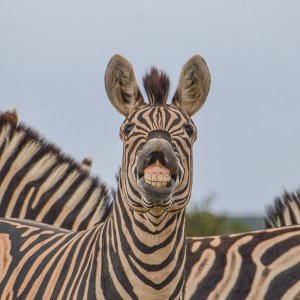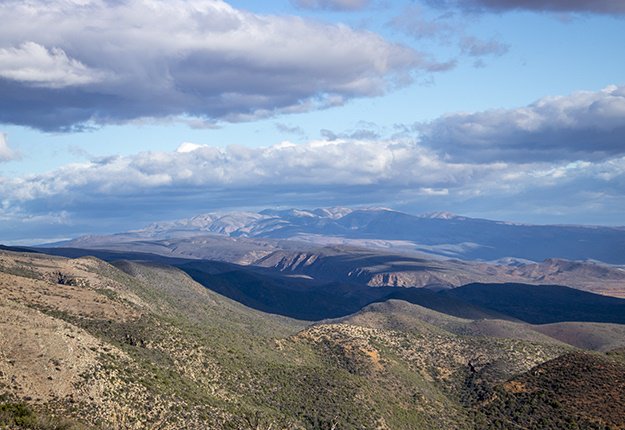Mountain Zebra
Posted: Thu Mar 01, 2018 12:53 pm
Hunting organisation aids conservation of rare Zebra species in drought-stricken Klein Karoo
2018-03-01 08:36 - Gabi Zietsman
The CapeNature-managed Kammanassie Game Reserve in the Klein Karoo is struggling with a severe drought, and the dried up rivers, fountains and streams have left its animals without water.
The most affected is the reserve's Cape mountain zebra population of 42, and although small the herd is genetically different to the other two main herds in the country - Gamkaberg Game Reserve and Mountain Zebra National Park - and is thus important for the survival of the species.
The Cape Hunters and Gaming Conservation Association, also known as Kaapjag, provided a life-saving donation to CapeNature in the form of a solar pump and arranged a 5 000 litre water tank sponsored by Roto Tank. This will help provide drinking water to the animals of Kammanassie and prevent thirst-related deaths.
"We decided to get involved because we are not only hunters but care for the environment as well and conservation has played a role in Kaapjag’s activities since our establishment 34 years ago,” says Kaapjag conservation official Gustav Smit.
Kaapjag manages Western Cape hunters and sport shooters' 'dedicated status' which allows members to legally own more than four gun licenses for hunting, and also promotes shooting sports like clay shooting. They also have a conservation ethos that "aims to promote the knowledge and love of wildlife and nature in general".
Besides the drought, the Kammanassie population is also threatened by lack of habitat availability and frequent wildfires, which decimates its preferred habitats of Arid Restioid Fynbos and Waboomveld.
Although once nearly driven to extinction, the population has been increased by several modern conservation methods and is now classified as 'vulnerable' by the International Union for Conservation of Nature. Still, the Cape Mountain Zebra is the smallest of all existing zebra species and also the most geographically restricted, having once roamed widely along the southern mountains of the Western Cape and Eastern Cape.
“This is a fine example of a conservation partnership in action. As the conservation authority in the Western Cape, we value partnerships which add value to the conservation of our valuable and unique biodiversity,” says CapeNature CEO Dr Razeena Omar.
“The donation is an invaluable contribution to the survival of these unique zebras, and we thank Kaapjag for this.”
2018-03-01 08:36 - Gabi Zietsman
The CapeNature-managed Kammanassie Game Reserve in the Klein Karoo is struggling with a severe drought, and the dried up rivers, fountains and streams have left its animals without water.
The most affected is the reserve's Cape mountain zebra population of 42, and although small the herd is genetically different to the other two main herds in the country - Gamkaberg Game Reserve and Mountain Zebra National Park - and is thus important for the survival of the species.
The Cape Hunters and Gaming Conservation Association, also known as Kaapjag, provided a life-saving donation to CapeNature in the form of a solar pump and arranged a 5 000 litre water tank sponsored by Roto Tank. This will help provide drinking water to the animals of Kammanassie and prevent thirst-related deaths.
"We decided to get involved because we are not only hunters but care for the environment as well and conservation has played a role in Kaapjag’s activities since our establishment 34 years ago,” says Kaapjag conservation official Gustav Smit.
Kaapjag manages Western Cape hunters and sport shooters' 'dedicated status' which allows members to legally own more than four gun licenses for hunting, and also promotes shooting sports like clay shooting. They also have a conservation ethos that "aims to promote the knowledge and love of wildlife and nature in general".
Besides the drought, the Kammanassie population is also threatened by lack of habitat availability and frequent wildfires, which decimates its preferred habitats of Arid Restioid Fynbos and Waboomveld.
Although once nearly driven to extinction, the population has been increased by several modern conservation methods and is now classified as 'vulnerable' by the International Union for Conservation of Nature. Still, the Cape Mountain Zebra is the smallest of all existing zebra species and also the most geographically restricted, having once roamed widely along the southern mountains of the Western Cape and Eastern Cape.
“This is a fine example of a conservation partnership in action. As the conservation authority in the Western Cape, we value partnerships which add value to the conservation of our valuable and unique biodiversity,” says CapeNature CEO Dr Razeena Omar.
“The donation is an invaluable contribution to the survival of these unique zebras, and we thank Kaapjag for this.”


